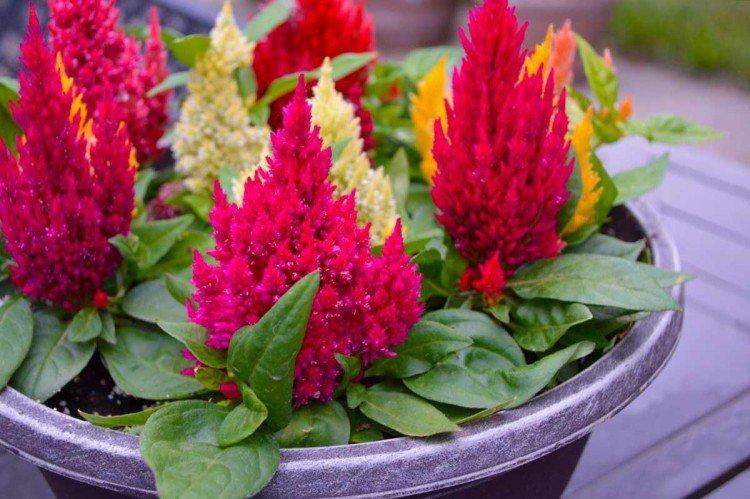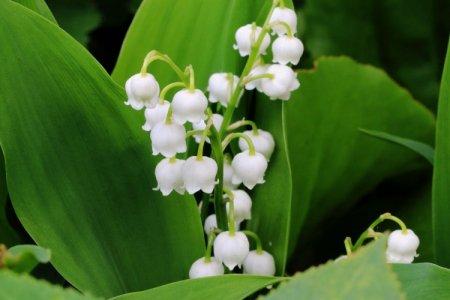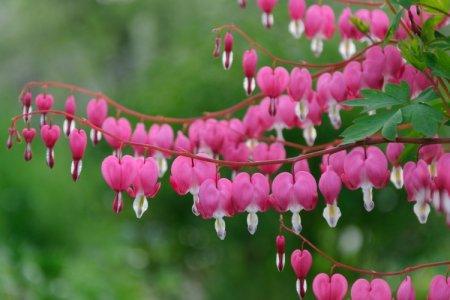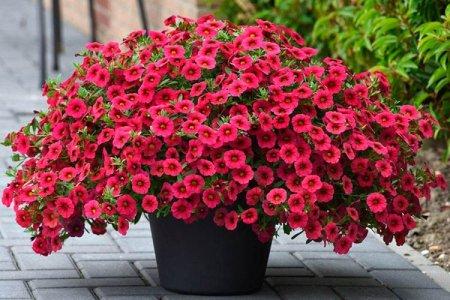
Charming tassels and balls of celusion during flowering can literally drown the garden in bright colors. It looks very impressive from afar, and even more original - up close, when the bizarre shape of the inflorescences is clearly visible. In addition, she is also not too moody. Let's tell you more!
general information
Celosia are beautiful ornamental shrubs with very bright, large and voluminous inflorescences of all shapes. The leaves are just as varied - linear, lanceolate, ovoid, green, red and bronze. It is not surprising that summer residents are so fond of celosia.
Depending on the variety, the bushes grow by an average of 50-100 cm. Among them there are perennial varieties, but they do not tolerate frost and can grow for years only in indoor conditions. Otherwise, it is a spectacular seasonal annual that blooms from June to September.

Types of cellosis
All the numerous decorative varieties of celosia can be divided into three main groups. They are classified according to the type of inflorescence.
Comb cellosis
In its natural environment, it is a perennial, but in our country it is grown as an annual plant. There are varieties with red leaves, and the main shades of flowers are yellow, orange and red. This species is often grown indoors as well.

Spikelet celosia
Its second name is Hatton. Depending on the variety, it can be very tiny - about 20 cm, or high - up to 1.2 m. In addition to red, yellow and orange flowers, there are beautiful white and coral varieties.

Silver celosia
A large and varied group of varieties that gardeners especially love. Lush bushes grow up to 1 m, and are found in the most interesting color combinations. For example, silvery leaves with yellow flowers or red leaves with orange blossoms.

Celezia care
Celosia is completely unpretentious and does not require any complicated care. It is enough to water it and regularly loosen the soil so that it does not sour and does not get lost.
Temperature
Celosia needs warmth and feels best from May to autumn. It does not tolerate even light cold, and that is why it is grown as an annual. Keep this in mind when planting outdoors.

Lighting
Choose a well-lit, but always protected from wind and draft area. In the shade, celosia grows worse and blooms poorly. This applies not only to garden plants, but also to indoor plants.

Watering
Watering should be stable, regular, but not too intense. On hot days, increase the frequency and add morning sprays. Because if there is not enough moisture in the cellosis, the peduncles will not form.

The soil
We need a loose, fertile and non-acidic soil, and always with good drainage. Celosia does not tolerate excess moisture, so it is important that it does not stagnate in the soil. It is advisable to dig up the acidic soil with lime.

Fertilizers and feeding
When fertilizing cellosis with organic matter, keep in mind that the bush grows better with it, but blooms less. Complex fertilizers are well suited for flowering plants. They can be gradually applied once every 1-2 weeks.

Planting and breeding
Garden cellosis can be propagated simply by seed. They are planted in March in loose soil, carefully scattered over the surface. After that, sprinkle them with warm water and leave them under the film until shoots appear, spraying occasionally. The greenhouse can be removed when the seedlings are a little stronger.
As needed, seedlings can be dived and even fed a little with liquid fertilizers. Make sure they have at least 5 hours of bright light and always be warm. Celosia is transplanted into the garden only when the threat of frost has finally passed.
But propagation by cuttings, which usually suits garden plants better, is not very suitable for cellosis.The problem is that this way the variety loses its decorative effect. But in general, if desired, the cutting can be easily rooted in wet sand in about 2 weeks.

Pests and diseases of cellosis
Celosia leaves love to eat slugs and snails. You will have to deal with them in a complex way: use mechanical traps, remove pests by hand and spray seedlings with insecticides. Another problem is aphids, but more often than not, even home methods are enough from it, such as treatment with soapy water.
The most common disease is black leg, when the shoot starts to rot right at the base. Most often this happens due to an excess of moisture. In the early stages, it is enough to sprinkle the stems and soil with ash, loosen and let dry. In the later ones, the plant will most likely die.
Chlorosis of the leaves also begins due to excessive watering, and then the principle of struggle is the same. The second reason is a lack of iron, and special preparations will help here.

Celosia - photo
There seem to be all shades of yellow, red, orange, pink and raspberry among the varieties of celosi. But even this is far from the limit!




























